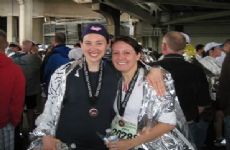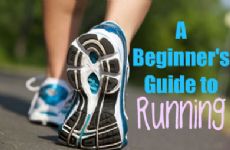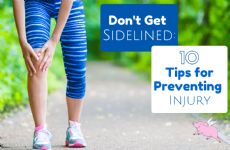By CD318156,
SparkPeople Blogger
5/19/2010
In recent years running has seen a huge resurgence for those of looking to reclaim their health and meet new goals. But what happens when you are forced to forgo your running due to an inconvenience caused in your training. It can leave many runners sidelined and frustrated; however by taking a few precautions early on hopefully you can prevent these so-called minor inconveniences from turning into bigger ones down the road.
Blisters
Blisters are one of the most common running inconveniences especially as a runner increases his/her mileage. They are primarily seen on the soles of the feet and the toes, but they can actually occur anywhere on the foot. And while they may be a minor inconvenience for some, for others they can literally be so painful they can keep you from running.
In order to prevent blisters, you need to know what causes them. Friction, moisture and heat are the primary sources for causing blisters. But what cause the buildup of heat, friction and moisture?
Causes
- Moisture from sweating feet
- Wet feet from running in the rain or through water
- Shoes that are too tight
- Shoes that are too small
- Friction from socks
- Friction from wearing orthotics
So what can be done to prevent these annoying inconveniences?
Preventive Measures
- Make sure your shoes are at least a half size or larger than your street shoes—the reason, as you run your foot begins to swell which can cause friction within the shoe leading to blisters.
- Wear wicking socks especially if your feet sweat.
- Avoid cotton socks. Cotton retains moisture, therefore it increases friction.
- Apply moleskin to blister prone areas on your feet before running.
- Apply anti-friction cream such as Mission’s High Performance Anti-Friction Cream
- If you have calluses on your feet, do not remove or soften them, especially when you receive a pedicure. Calluses are a protective measure for your feet to help keep blisters from recurring.
Chafing
Chafing can occur anywhere there is friction on the body. The primary areas include: under the arms, in between the thighs, along the bra line for women and the nipple area for men. For many runners, chafing is just a minor inconvenience causing a slight burning sensation of the skin that quickly heals. While for others, it can be a quite painful and irritated, even to the point of bleeding.>
Causes
Just like blisters, chafing is caused from friction from clothing rubbing against the skin, heat, and moisture from sweating.
Preventive Measures
- Invest in wicking shirts and shorts-Because chafing is caused from excessive moisture and repeated rubbing of clothing against the skin, wicking fabrics will help pull that moisture away from the skin which has been shown to reduce the risk of chafing.
- Avoid wearing cotton-Just like cotton socks are not recommended for runners, same is true for their running attire. When cotton gets wet it takes time to dry which is difficult if one is a heavy sweater. The rough, wet fabric then becomes a major contributor to chafing.
- Wear snug fitting shirts and shorts, preferably made of Spandex or Lycra-Loose fitting clothing can allow excess fabric to rub against the skin leading to a greater incident of friction. Bike shorts worn under running shorts can help reduce the friction, especially between the thighs.
- Apply an anti-friction cream before your runs-Apply Mission’s High Performance Anti-Friction Cream or Body Glide to those areas prone to chafing before you head out for your run. These products provide a protective barrier between the fabric and your skin.
- Wear a seamless wicking running bra-Wearing a seamless wicking running bra will help pull moisture away from the skin and because there are no seams to create the friction, your risk for chafing is greatly reduced.
- Stay well hydrated- Hydration allows a continuous flow of sweat so that salt crystals do not have the opportunity to build up on the skin which can lead to chafing.
By taking a few preventative measures, you may be able to avoid the small inconveniences that may not keep you from running, but they most definitely can keep you from fully enjoying the running experience.
Next blog in this series will cover gastrointestinal disturbances, side stitches and shin splints.
Have you ever experienced issues with blisters or chafing, if so, what measures have you taken to prevent recurrence? What inconveniences have you experienced that you would like to see covered?
|
|























